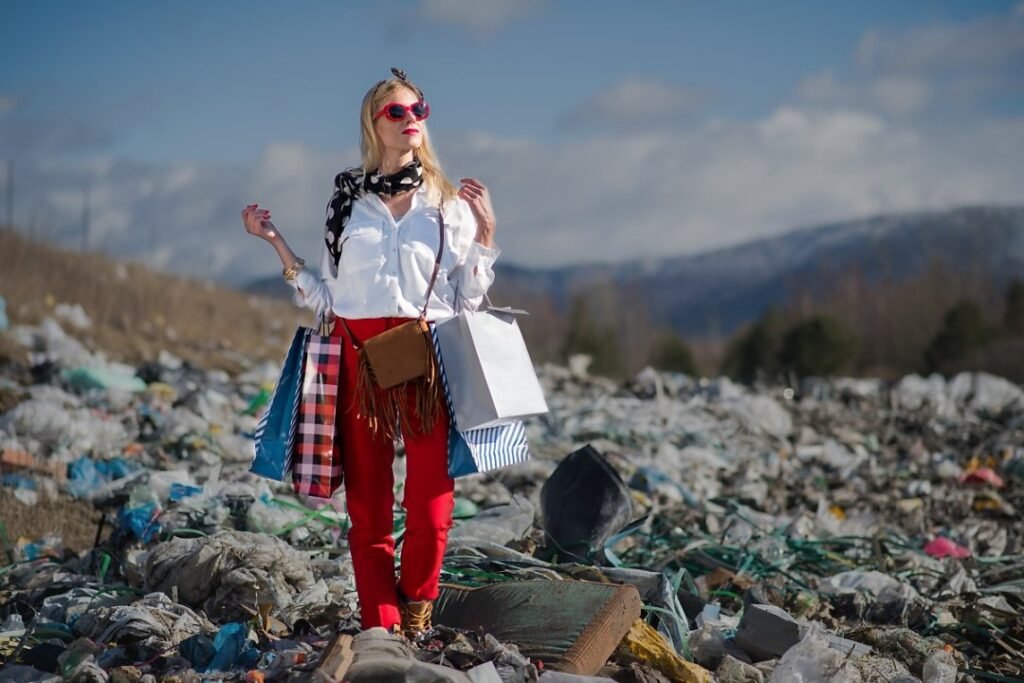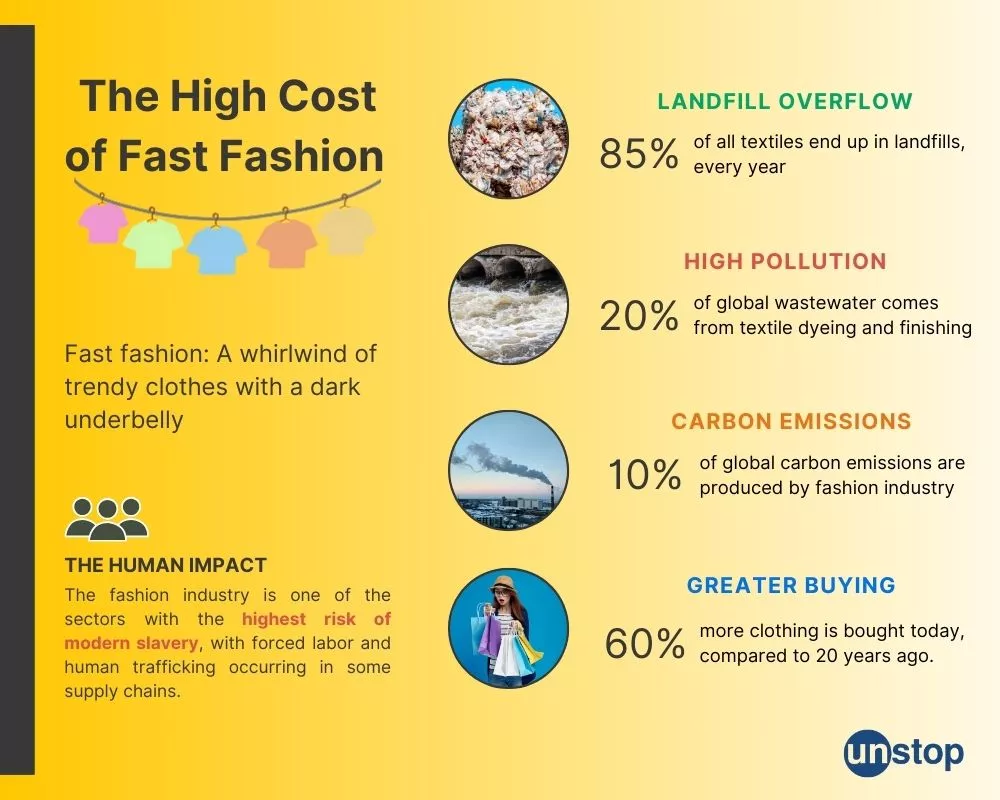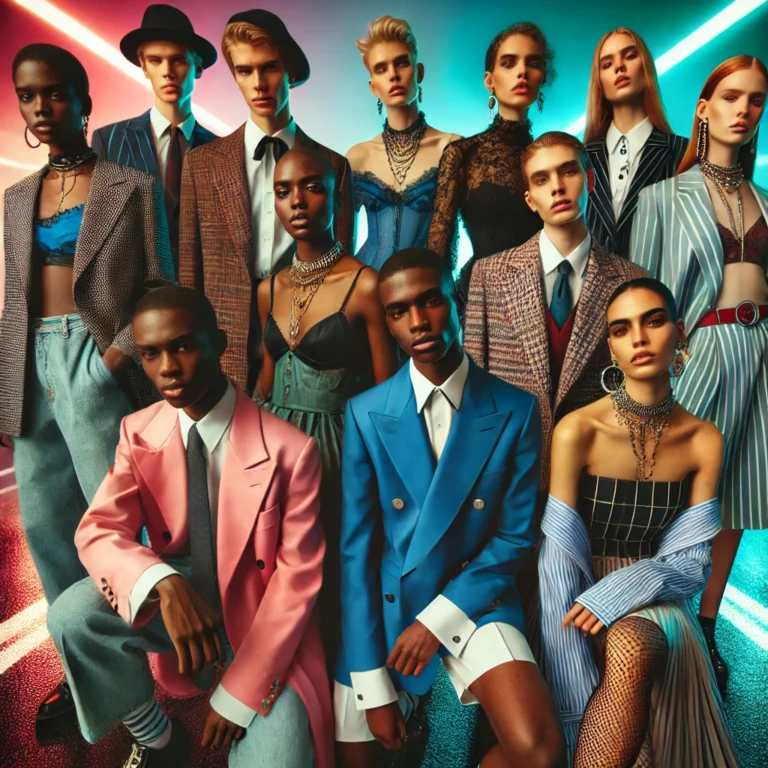The Rise of Sustainable and Ethical Fashion: Shaping a Conscious Future
Fashion is more than just clothing; it’s a statement of who we are and the values we hold. Over the years, the fashion industry has faced growing criticism for its environmental impact, unethical labor practices, and unsustainable production methods. As awareness grows, consumers are becoming more conscious of their choices, pushing brands to adopt sustainable and ethical practices. This shift towards sustainability isn’t just a trend—it’s a revolution reshaping the fashion industry from the ground up.
The Dark Side of Fast Fashion: A Wake-Up Call for Change
Fast fashion brands like Zara, H&M, and Shein have dominated the market with their low-cost, high-turnaround clothing. However, the environmental and social costs of this business model are staggering. The fashion industry is responsible for approximately 10% of global carbon emissions, more than all international flights and maritime shipping combined. The mass production of cheap clothing leads to excessive water usage, pollution from toxic dyes, and mountains of textile waste that end up in landfills.
Additionally, the labor behind fast fashion often involves underpaid workers in unsafe conditions, with reports of sweatshops, child labor, and exploitation emerging from major manufacturing hubs. The Rana Plaza disaster in 2013, which killed over 1,100 garment workers in Bangladesh, was a shocking reminder of the human cost of cheap fashion. As a result, consumers are demanding change, pushing brands to prioritize sustainability and ethics over profit margins.

Sustainable Practices: How Brands Are Making a Difference
Brands are responding to this call for change by embracing sustainable and ethical practices. From sourcing eco-friendly materials to improving supply chain transparency, here are some ways the fashion industry is making strides towards a greener future:
- Eco-Friendly Materials: Innovating Beyond Cotton and Polyester
- Traditional materials like cotton require vast amounts of water and pesticides, while polyester is derived from fossil fuels. In response, brands are exploring innovative alternatives such as organic cotton, hemp, Tencel (made from wood pulp), and recycled fabrics. For instance, Patagonia has been a pioneer in using recycled materials, creating fleece jackets from plastic bottles and reducing the environmental impact of their products. Patagonia also donates a portion of its profits to environmental causes, making it a leader in conscious business practices.
- Circular Fashion: Designing Out Waste
- Circular fashion focuses on creating a closed-loop system where products are reused, recycled, or upcycled. Brands like Eileen Fisher are leading the way by encouraging customers to return old garments, which are then remade into new pieces. This approach minimizes waste and extends the life cycle of clothing, moving away from the traditional ‘take, make, waste’ model. Eileen Fisher’s “Renew” program exemplifies how brands can integrate sustainability into their core business models.
- Ethical Manufacturing: Putting People First
- Ethical fashion emphasizes fair wages, safe working conditions, and respect for workers’ rights. Brands such as Everlane are committed to “Radical Transparency,” providing detailed insights into their factories and cost breakdowns of their products. This approach allows consumers to make informed decisions about where their clothes come from and who made them. Everlane’s commitment to ethical manufacturing has set a standard that challenges the opaque practices of traditional fashion brands.
- Low-Impact Dyes and Water Conservation
- The fashion industry is notorious for polluting water sources with toxic dyes. To combat this, brands like Stella McCartney are using low-impact dyes and water-saving technologies, significantly reducing their environmental footprint. Waterless dyeing and digital printing are also gaining traction as sustainable alternatives. Stella McCartney’s collections are known not only for their innovative use of materials but also for promoting animal-free fashion, reinforcing the brand’s commitment to ethical standards.
The Role of Conscious Consumerism: Voting with Your Wallet
Consumers play a pivotal role in driving the shift towards sustainable fashion. Every purchase is a vote for the kind of industry we want to support. By choosing sustainable brands, reducing consumption, and opting for quality over quantity, consumers can help reduce the demand for fast fashion and its harmful practices.
- Support Brands Committed to Sustainability
- Brands such as Reformation, Veja, and Girlfriend Collective have built their business models around sustainability, using recycled materials, ethical manufacturing, and eco-friendly packaging. Supporting these brands not only helps the planet but also sets an example for other companies to follow. Veja, for instance, focuses on transparency, fair trade, and using raw materials sourced from organic farming without chemicals or pollutants.
- Buy Less, Choose Well, Make It Last
- A mantra popularized by fashion icon Vivienne Westwood, this approach encourages consumers to invest in high-quality, timeless pieces that can be worn repeatedly. Instead of buying multiple cheap items, focus on building a versatile wardrobe with sustainable staples. Brands like Cuyana promote the philosophy of “fewer, better things,” urging consumers to prioritize quality over quantity.
- Thrift, Swap, and Rent
- The rise of secondhand shopping, clothing swaps, and rental services like Rent the Runway offer eco-friendly alternatives to buying new. Thrifting not only saves money but also reduces the demand for new clothing production, making it a win-win for consumers and the planet. Apps like Depop and Poshmark are also fueling the circular fashion movement by making secondhand shopping accessible and trendy.

Society’s Shift: Why Sustainable Fashion Matters
The rise of sustainable fashion isn’t just about saving the environment; it’s about rethinking our relationship with clothing and its impact on society. It challenges the idea of disposable fashion, encouraging us to value quality and craftsmanship over fleeting trends. As more people embrace conscious consumerism, the fashion industry is forced to adapt, paving the way for a more ethical and sustainable future.
Personal Impact: A Step Towards Change
As individuals, our choices have the power to influence the market. By supporting brands that prioritize sustainability, demanding transparency, and reducing our own consumption, we can contribute to a fashion industry that respects people and the planet. It’s not about being perfect but making better choices that align with our values.
Conclusion: Fashion as a Force for Good
The rise of sustainable and ethical fashion marks a significant shift in the industry, driven by conscious consumers and forward-thinking brands. While there is still much work to be done, the progress so far is promising. By continuing to support sustainable practices, we can ensure that fashion becomes a force for good, making a positive impact on both people and the planet.
Call to Action: Make Your Impact
Together, we can make a difference. Explore the sustainable brands mentioned, start thrifting, or share this article to spread the word about conscious fashion. Every small change count in creating a more ethical industry. Your choices have power—let’s use them wisely.
for more visit






